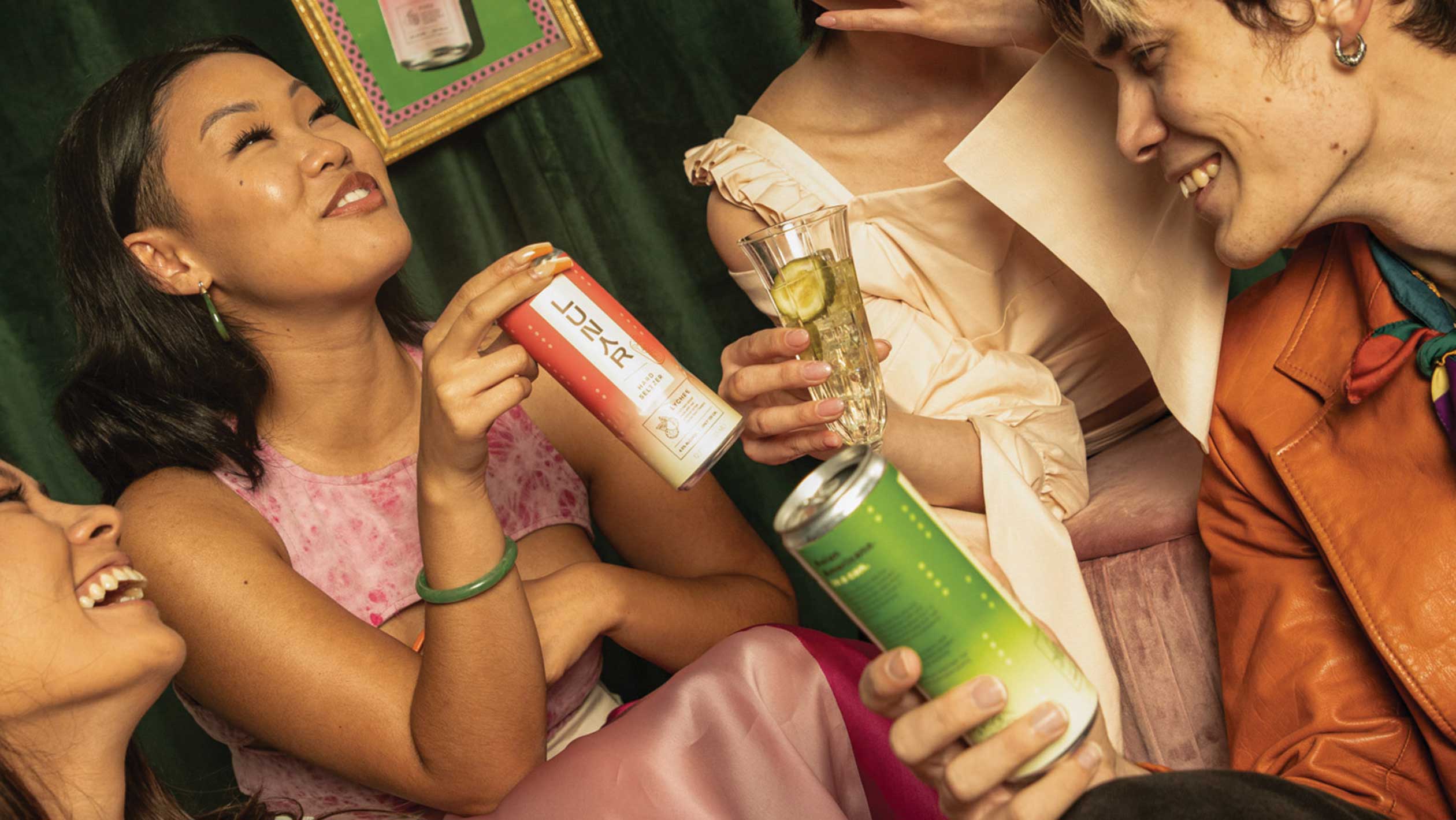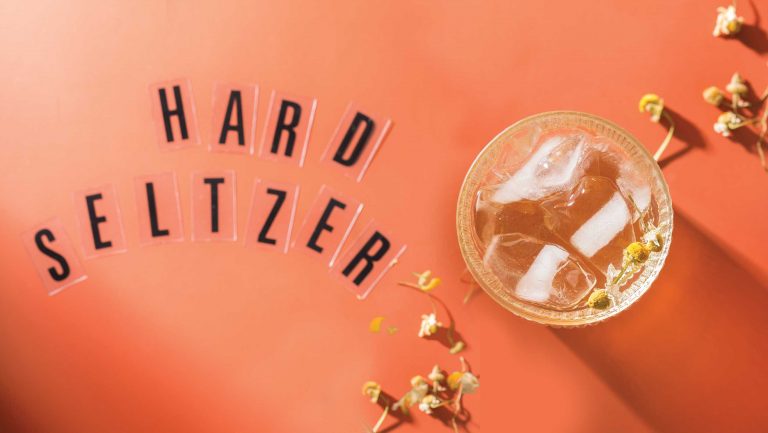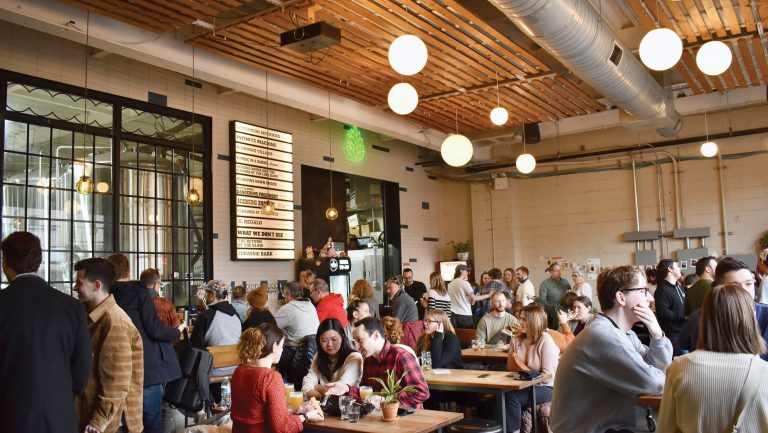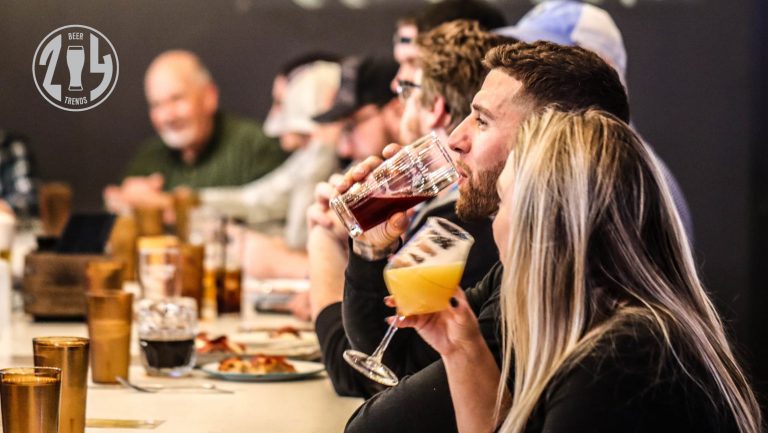The word “launch” rarely applied so well to a beverage category’s introduction as it did with hard seltzer, which went stratospheric in a matter of a few years. From its mainstream emergence in 2016, a 2020 report from NIQ cited hard seltzer as “the most resilient alcohol segment in the U.S.,” becoming a multibillion-dollar industry with over 300 brands having entered the category.
But in 2021, hard seltzer hit its peak, with slowing sales prompting some brands to destroy excess inventory and major media outlets to label the category as a fad headed towards extinction. However, brands and analysts alike believe it is premature to toll hard seltzer’s death knell.
“The ‘shakeout’ process of underperforming brands being discontinued is nearing the end,” says Adam Rogers, the research director of North America for IWSR Drinks Market Analysis, “with an eventual leveling off being the next stage of the segment’s trend lifecycle.” Lessons learned from hard seltzer’s decline, as well as necessary pivots that place the category more in line with consumers’ changing values, are key to the stabilization of sales forecasted for hard seltzer in the coming years.

Don’t miss the latest drinks industry news and insights. Sign up for our award-winning newsletters and get insider intel, resources, and trends delivered to your inbox every week.
Understanding Hard Seltzer’s Decline
Putting hard seltzer’s decline in context is key to understanding where it stands now, and where it is going. Quite simply, in helping to usher in the ready-to-drink (RTD) movement at large, hard seltzer became an agent of its own undoing.
Spirit-based RTD cocktails such as vodka or tequila sodas, which Rogers identifies as a move toward “premiumization” for hard seltzer drinkers, may taste similar to malt-based hard seltzers, but they are classified by brands and market analysts as a distinct category, given that the production process between them is markedly different. This effectively moves some of those drinkers away from the hard seltzer segment, numbers-wise, but nonetheless into adjacent—competitive—options, sometimes crafted by hard seltzer brands themselves.
Fuller-flavored and higher-ABV RTD cocktails, as well as hard teas, have also claimed a piece of hard seltzer’s pie. According to a 2023 report by NIQ, while RTDs overall experienced sales growth of 7.2 percent from the previous year, “spirits RTDs and flavored malt beverages [are] gaining share at hard seltzer’s expense.”
The same report also shows, however, that hard seltzer still accounts for 35 percent of the RTD mix for consumers. There is belief that hard seltzer will continue to be a mainstay, having reached category maturity, and a 2022 report from IWSR Drinks Market Analysis projects that “a saturated malt-based hard seltzer segment will retain the largest share of the overall RTD category over the next five years.”
Hard seltzer is still in the mix because not all hard seltzer consumers made the sidestep to spirit-based selections. “Some consumers still prefer specific malt-based options, even if the brand has brought a spirit-based option to market,” says Rogers, which he cites as being the result of their smaller price tags compared to their more premium, vodka or tequila-based counterparts.
Higher ABVs and Larger Formats Drive Hard Seltzer Sales
In short: hard seltzer is here to stay, but has already begun its evolution to stay competitive. A 2023 IWSR Drinks Market Analysis report notes that “the emphasis of the U.S. RTD market is shifting from volume to value, as consumers gravitate to more premium products with fuller flavors and higher ABVs.”
A report from Cognitive Market Research forecasts larger growth in the coming years for hard seltzers above 5% ABV over those with less than 5%—an interesting evolution for the beverage, given its initial association with a “better for you” framework. Category leaders White Claw and Truly both offer an 8% ABV option (Surge and Truly Unruly, respectively) to meet this growing interest.

“We found that drinkers wanted that bigger punch and are looking to make the most out of their dollar,” says Matt Withington, the senior marketing director for Truly. Rogers confirms that this has financial signals, especially for those that have stayed with the less expensive hard seltzer category: “Consumers selecting higher-ABV malt-based options—which are still less expensive than spirit-based products with lower ABV—indicates that they are seeking out value-added type products.”
In addition to higher-ABV selections, larger-format, single-serve tallboys also offer hard seltzer devotees a higher value option. Withington notes that sales of Truly’s single-serve, 24-ounce cans are up 20 percent over the last year. This also speaks to an important point about where hard seltzers are today, in a post-pandemic landscape, versus where they started, when consumers were mostly drinking at home. NIQ’s 2023 report states: “The convenience channel is where single units are seeing an uptick as people go back to making quick trips, travel more, and spend less time in big-box stores.”
According to Taylor Proctor, the general manager of Atlanta’s Hop City in the Krog District, these aspects are playing out in retail. “The consistent theme between the hard seltzer category and the new cocktail-flavored, seltzer-adjacent category is pack size, and alcohol content,” she says. “In general, people are gravitating towards 19.2-ounce or 24-ounce seltzer, and/or higher gravity. Some people will trade bigger cans for standard 5% alcohol, but our biggest demand is for higher-ABV options, and the bigger the can, the better.”
Emerging Hard Seltzer Brands and Flavor Trends
While AB InBev discontinued the once-popular Bon & Viv hard seltzer in 2023, retailers report that much of the category shakeout seems to be among craft breweries who got into the hard seltzer game to begin with to account for declining beer sales. “We try to support smaller, more niche brands, and we used to carry many local options for hard seltzer, such as Monday Night Brewing, Scofflaw, New Realm,” says Proctor. “At present, all local seltzer has been pulled from market distribution, and most breweries locally might have one seltzer option on draft for on-premise consumption. It has been increasingly difficult to find seltzer placements in the last year.”

Focused, independent brands are still emerging, and many of the most successful ones place an emphasis on smaller markets or niche flavors. Brands such Lunar and Nectar have put forth Asian flavors with rapid growth, which has been compounded by “robust growth” in the Asia-Pacific market for hard seltzer, according to a 2023 report by iMarc Group.
Since launching at the end of 2020, Lunar cofounder Sean Ro reports that brand sales, with flavors such as Yuzu, Lychee, and Plum, “have doubled year over year.” Nectar Hard Seltzer, also founded in 2020, “is growing exponentially, and we are one of the top performing FMBs [inclusive of hard seltzers and other flavored malt beverages] in all the territories that we sell in,” says cofounder Jeremy Kim. “This year, our sales will nearly double without expanding into a bunch of new markets.” In the next quarter, Kim reports that Nectar will be available at major grocery chains and retailers, “meaning that previously, we were hitting those numbers in smaller grocery stores.”
New brands are also still coming into the market with similar goals. Grown Folks was launched in 2024 as the first Black-owned hard seltzer. “It was clear that our perspective, tastes, and preferences were not reflected in the current offerings, and there was an opportunity within a large part of the population that were searching for products that speak to them,” says Danica Dias, Grown Folks’ founder, whose flavors include Ambrosia, Key Lime, and Peach Cobbler. The initial rollout of Grown Folks in local Whole Foods Markets “exceeded expectations,” says Dias, with a rapid expansion to over 80 retail locations in California.
The next several years will show how hard seltzer stacks up against what are still optimistic projections for the category, despite the doomsday headlines that its initial decline prompted. Meanwhile, consistent with its early reputation for resiliency, the category continues to have a place on the shelf.

Dispatch
Sign up for our award-winning newsletter
Don’t miss the latest drinks industry news and insights—delivered to your inbox every week.






